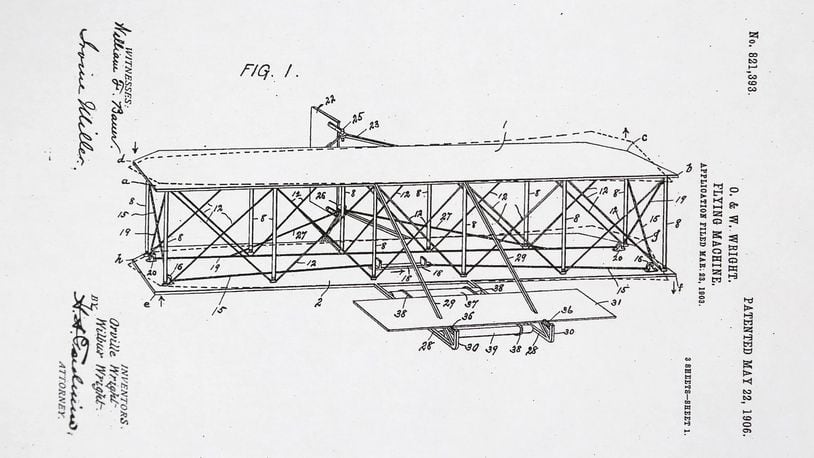At first glance, the carefully drawn object in each illustration seems familiar, but it can take careful study to recognize the often everyday objects in a new perspective.
“Be it known that we, ORVILLE WRIGHT and WILBUR WRIGHT, citizens of the United States, residing in the city of Dayton, county of Montgomery, and State of Ohio, have invented certain new and useful Improvements in Flying-Machines … .” That’s how United States Patent No. 821,393, filed March 23, 1903, began.
Three pages of detailed patent drawings accompany the Wright brothers’ application on the U.S. Patent and Trademark Office website. Each of the black and white illustrations is a canvas for genius.
Stylized figures label the “FLYING-MACHINE” drawings, each one with its own meaning and corresponding to written specifications.
Ermal Fraze revolutionized how we open beverage cans when he invented the “pull-top.” His tinkering didn’t end there, and he continued to find ways to improve on his invention. In 1969, the “CAN END WITH FOLDED PULL TAB,” designed to prevent people from littering, was patented.
“The invention meets this need by scoring the can top to form a tear strip which at its base end is permanently attached to the can top,” wrote Fraze in his application.
His description is illustrated by three circles surrounding an abstract pull tab, drawn with shaded lines and noted with graceful arrows and numerals.
The patent drawings for Charles F. Kettering’s “ENGINE-STARTING DEVICE” span three pages.
The inventor made sure to note in his application the significance of the detailed pictures. “It may be stated that the type of automobile in which this improved system is shown, as applied, is the ‘Cadillac’ which is a well-known automobile, on the market at the present time.”
The Cadillac’s transverse shaft, pivoted armature and clutch shaft are drawn in elegant detail with a wire attached to the motor-generator coiling across the page.
James Ritty and John Birch first applied for a patent for their “CASH REGISTER AND INDICATOR” in 1879 after Ritty sought to find a way to keep his saloon employees from stealing.
Finally, when putting together their application, the inventors, Arthur J. Frei and Raymond C. Davis, described its purpose as a way to “minimize effort on the part of a housewife…”
On July 21, 1959 they received the patent they sought for their innovation: the ice cube tray.
About the Author
